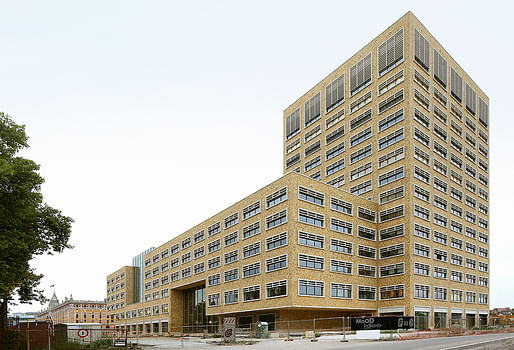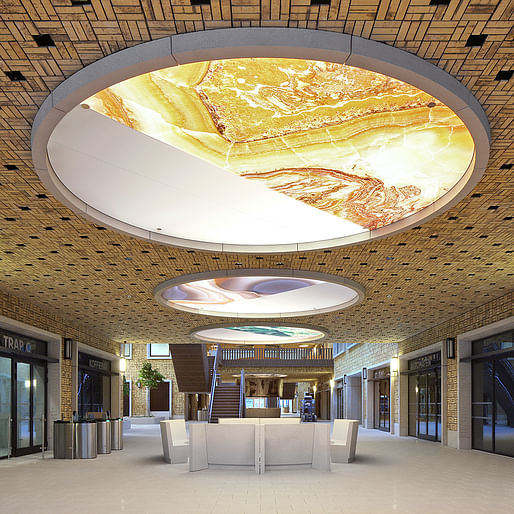
The city of Brussels has experienced an energy revolution in the last ten years, transforming the Belgian capital into a model for the passive house movement. As a result of the regional government’s 2009 decision to fully embrace passive constructions, the city has become one the most 'passive' cities in Europe and a leader in building energy performance.

In keeping with their environmental standards, the Flemish Government has just moved into their new home and Belgium's largest passive office building. Designed by the Dutch-firm Neutelings Riedijk Architects, the 66,500 square meter building will house the Flemish government's 2,600 employees. Equipped with 2,000 m² of solar panels capable of producing enough energy for 100 families, the building is the most energy efficient of any building used by Flemish Civil servants and will save the Flemish Government 8.8 million euro/annum in rent.

Located on the Tour & Taxis site, the new office—clad in over half a million bricks—is part of an ambitious urban project to grow a new high-quality 30-acre urban area in the heart of Brussels. Opposite the Herman Teirlinck building is the Royal Warehouse, which has been redeveloped as a successful multifunctional building. Other historic buildings, such as the Sheds, the Hôtel de la Poste and the Hôtel des Douanes have also been redeveloped. The Gare Maritime, the gigantic historic freight station, is currently being renovated and converted into a mixed urban program, also by Neutelings Riedijk Architects, and there are several city blocks with hundreds of apartments currently under development.

According to the architects, the design "deliberately chooses for a low-rise building of six floors set around four green winter gardens. The building thus aligns with the existing heights of its surroundings and especially the roof height of the Royal Warehouse. The disadvantages of a classic office tower are the small floor fields and limited flexibility around the central core. The design of the Herman Teirlinck building, on the other hand, allows for large horizontal floor fields that are ideally suited for ‘Activity Based Working’. The project is therefore very compact and developed with human dimensions in mind. A modest height accent (60m) in the second line gives the project a recognizable character in the Brussels skyline."

The building also features large greenhouses that function as a heat buffer while offering a pleasant atmosphere and unique workplace; work from artists such as the immense ceiling circles with image motifs of plants and natural stones designed by Sophie Nys, Pieter Vermeersch and Aglaia Konrad; and public services on the ground floor such as restaurants, exhibition spaces, auditoriums, and sports facilities
No Comments
Block this user
Are you sure you want to block this user and hide all related comments throughout the site?
Archinect
This is your first comment on Archinect. Your comment will be visible once approved.